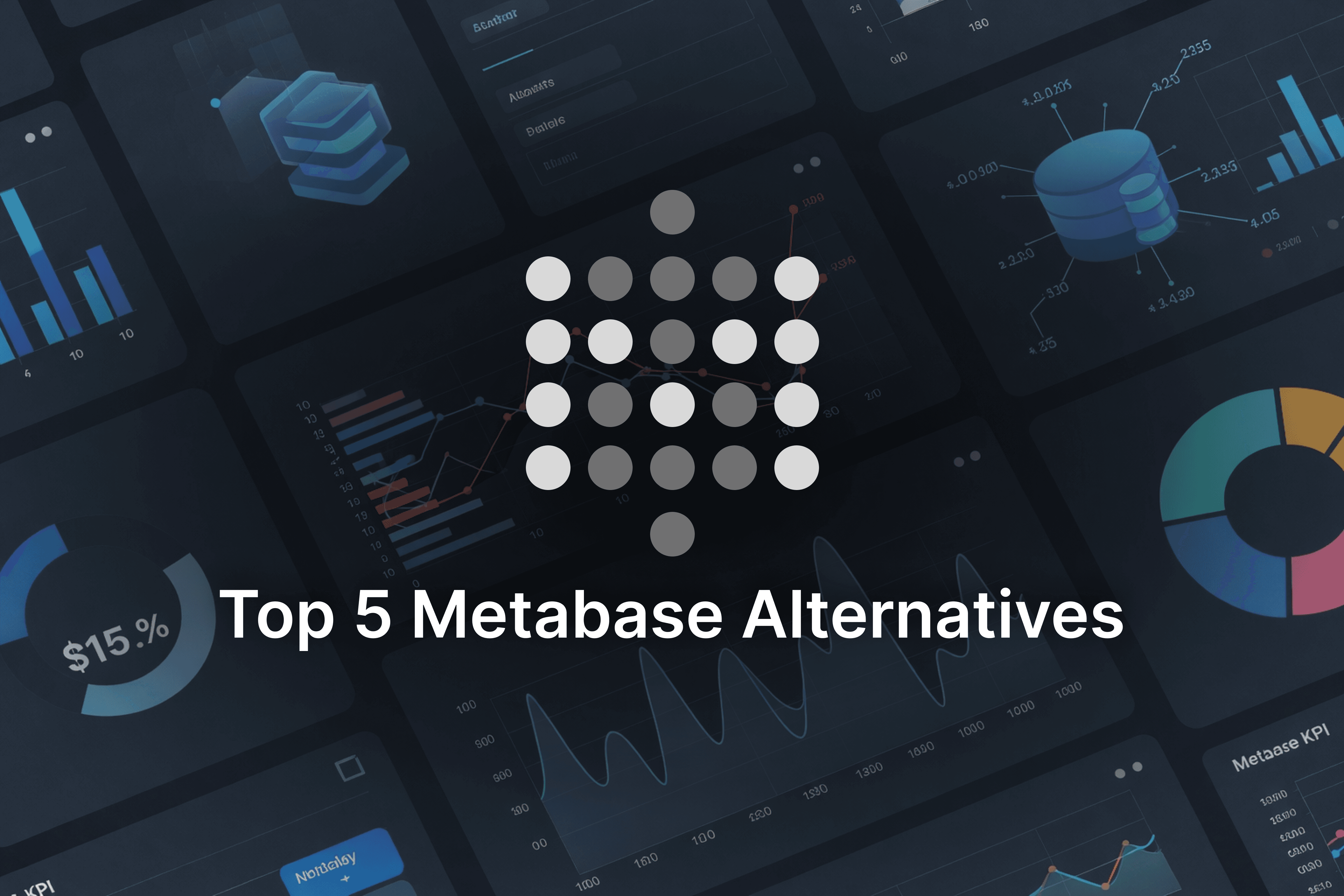Looking for a modern alternative to Domo? Compare Domo vs Supaboard in 2026 for embedded dashboards, AI, setup time, and ease of use. Read before you decide.

Many teams today are exploring alternatives to traditional business intelligence tools. Domo has been around for years and is known for its enterprise features. But newer platforms like Supaboard offer a different approach that focuses on simplicity, speed, and ease of use.
If you are trying to choose between Domo and Supaboard in 2026, this guide will help you compare both tools based on key factors like embedded analytics, AI features, setup time, and who each tool is best suited for.
Quick Comparison: Domo VS Supaboard
Feature | Domo | Supaboard |
|---|---|---|
Embedded Dashboards | Yes, with developer support | Yes, no coding needed |
AI Insights | Available, needs setup | Built-in and instant |
Setup Time | Several days or weeks | Under 10 minutes |
Pricing | Enterprise quotes | Transparent tiers |
Best For | Large enterprise teams | Enterprise and Growing teams |
Embedded Analytics and Dashboard Embedding
What is it?
Embedded analytics means you can place dashboards inside other apps, websites, or portals. This is helpful when sharing data with customers or teams without needing a separate login.
Domo
Domo allows dashboard embedding through its "Domo Everywhere" product. This gives flexibility but requires developer help, API knowledge, and enterprise licensing.
Supaboard
Supaboard allows anyone to embed dashboards with a shareable link or an iframe. You can control who sees it and whether it is public or private. This makes it a strong option for teams looking for easy embedded analytics without complexity.
Business Analytics for Everyday Teams
Domo is designed for companies with large data teams and offers deep features like data pipelines and ETL processes.
Supaboard focuses on making analytics simple. You can connect tools like Google Sheets or Stripe, ask a question in plain English, and get a chart or insight right away. This makes it easier for business users to access data without needing help from a data analyst.
Setup and Implementation
Domo usually takes time to set up. You may need to plan integrations, configure data access, and train users. This can take anywhere from a few days to a few weeks.
Supaboard is ready to use right after signup. Most teams can go live with their first dashboard in under 10 minutes.
Artificial Intelligence and Automation
Domo includes predictive analytics and supports AI through integrations. These features are useful but may require configuration.
Supaboard includes AI as part of its core features. It helps you identify trends, changes, or anomalies automatically. You do not need to install or configure anything extra.
SEO and Embedded Dashboards
Some businesses search for how dashboards can support SEO or public reporting. Domo and Supaboard both support dashboard embedding, but in different ways.
Domo supports embedding through iframes and APIs, mostly used by developers.
Supaboard allows easy public or private embeds with link sharing, which makes it useful for support portals, investor updates, or SEO-friendly content.
Pricing
Domo pricing is based on quotes and may include different user tiers, integrations, and usage levels.
Supaboard offers clear pricing with a 14 days free trial and paid plans for teams. You can get started without talking to sales.
Which Tool Should You Use?
Choose Domo if
Your company has a dedicated BI or data engineering team
You need advanced customization or governance
You want to manage complex data pipelines
Choose Supaboard if
You want a tool that works right away
You need embedded dashboards for your product or reports
You want to give business users direct access to insights
Frequently Asked Questions
1. What is the best alternative to Domo for business intelligence in 2026?
Supaboard is considered one of the best alternatives to Domo in 2026 for teams looking for simpler setup, built-in AI, and easy dashboard sharing. While Domo offers deep enterprise features, Supaboard is designed for faster adoption and non-technical users.
2. How does Domo compare to modern BI tools like Supaboard?
Domo is a robust enterprise BI platform with advanced capabilities and flexible APIs. Supaboard offers a more modern experience with quick setup, natural language queries, and real-time collaboration. It’s better suited for teams that want agility without technical barriers.
3. Which BI platform is better for embedded analytics: Domo or Supaboard?
Domo supports embedded dashboards via Domo Everywhere, which is powerful but may require developer input. Supaboard offers easy-to-use embedded analytics that can be deployed with a simple link or iframe, ideal for teams without coding resources.
4. Is Supaboard easier to implement than Domo?
Yes. Supaboard can be implemented in minutes with no technical support required. Domo typically needs a full onboarding process, user training, and sometimes assistance from developers or IT teams.
5. Can I use Supaboard for customer-facing dashboards like I do with Domo?
Yes. Supaboard supports public and private dashboard sharing, making it suitable for customer-facing use cases like client reporting, product usage dashboards, or investor updates, all without complex setup.
Final Thoughts
Domo is a strong option for companies with large data needs and internal resources. But many teams today want tools that are easier to set up and use.
Supaboard is one of the simpler alternatives to Domo. It is designed to get you from question to answer faster, with fewer steps in between. If your focus is on fast insights and easy collaboration, Supaboard fit for your team.










